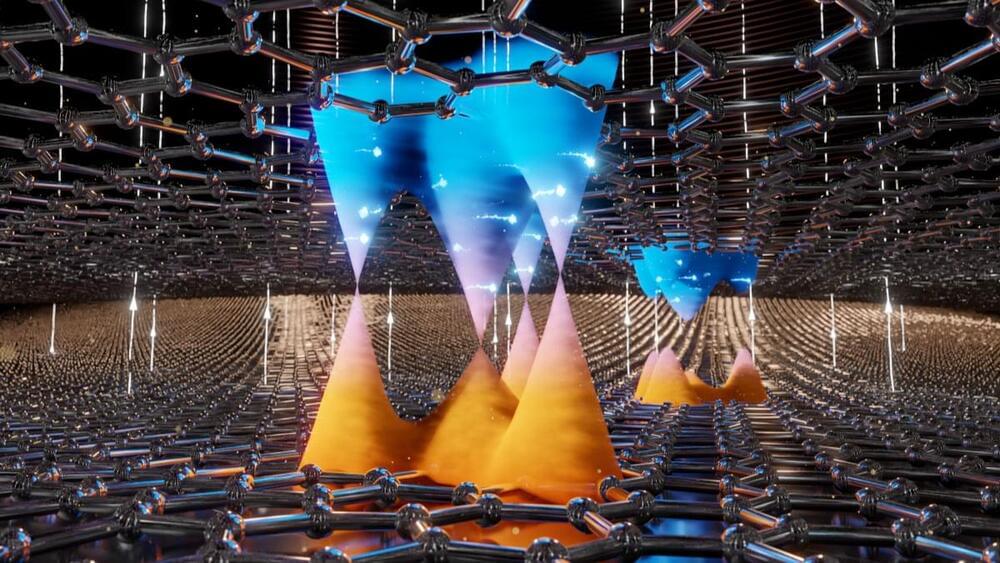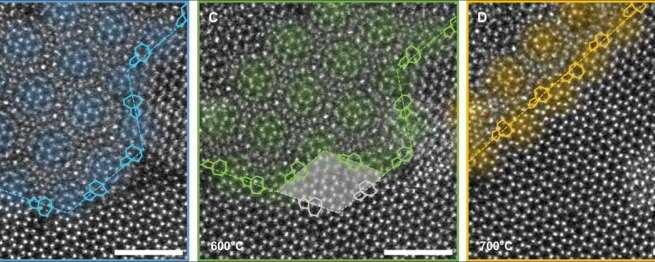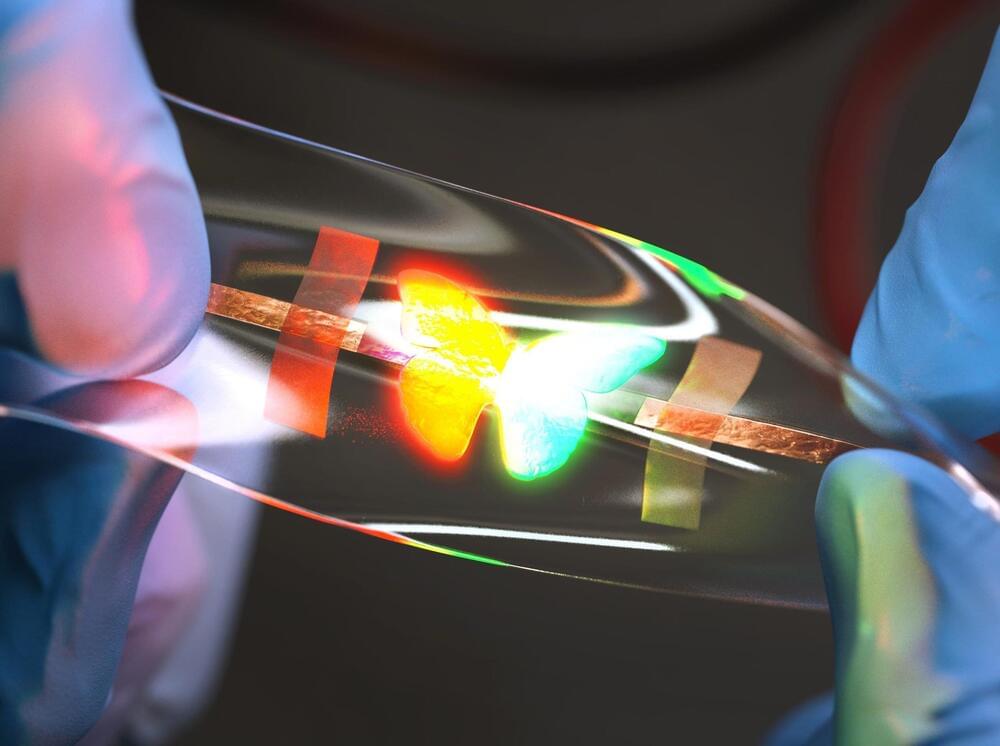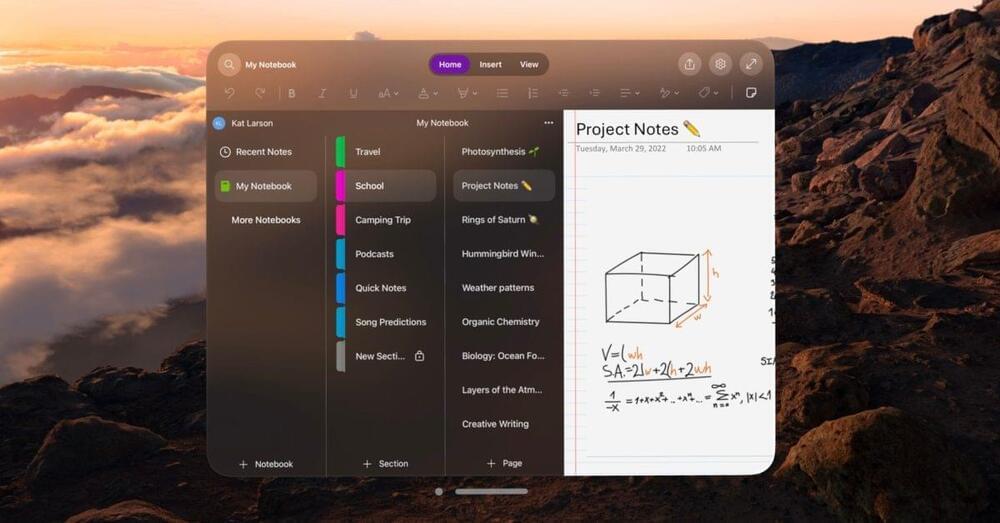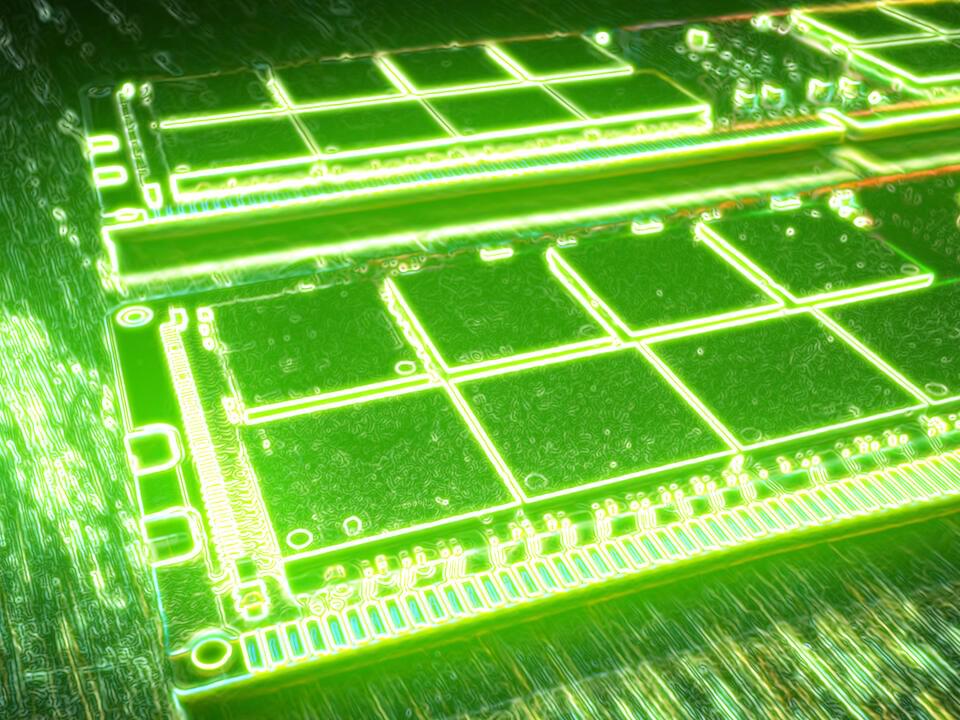Archive for the ‘computing’ category: Page 115
Apr 18, 2024
Charge travels like light in bilayer graphene
Posted by Shailesh Prasad in categories: computing, nanotechnology, particle physics
An international research team led by the University of Göttingen has demonstrated experimentally that electrons in naturally occurring double-layer graphene move like particles without any mass, in the same way that light travels.
Furthermore, they have shown that the current can be “switched” on and off, which has potential for developing tiny, energy-efficient transistors – like the light switch in your house but at a nanoscale.
The Massachusetts Institute of Technology (MIT), USA, and the National Institute for Materials Science (NIMS), Japan, were also involved in the research. The results were published in Nature Communications (“Probing the tunable multi-cone band structure in Bernal bilayer graphene”).
Apr 17, 2024
Atom-by-atom: Imaging structural transformations in 2D materials
Posted by Saúl Morales Rodriguéz in categories: computing, particle physics
Silicon-based electronics are approaching their physical limitations and new materials are needed to keep up with current technological demands. Two-dimensional (2D) materials have a rich array of properties, including superconductivity and magnetism, and are promising candidates for use in electronic systems, such as transistors. However, precisely controlling the properties of these materials is extraordinarily difficult.
Apr 17, 2024
More Than Just Fool’s Gold: Scientists Uncover Hidden Treasure in Pyrite
Posted by Saúl Morales Rodriguéz in categories: computing, sustainability, transportation
There’s a reason airlines won’t let you put your laptop in your checked luggage; the lithium-ion battery poses a serious fire hazard. But why? Lithium is incredibly reactive.
For instance, pure lithium violently interacts with seemingly innocuous water, releasing heat and forming highly flammable hydrogen. This reactivity, however, is exactly why lithium makes a great material for batteries, and why it is a critical mineral for the green energy transition.
Lithium-ion batteries are widely used in electric vehicles. Plus, they can store energy produced by renewable resources like solar and wind.
Apr 17, 2024
Quantum Stretch: Unveiling the Future of Elastic Displays
Posted by Saúl Morales Rodriguéz in categories: computing, nanotechnology, quantum physics
Intrinsically stretchable quantum dot light-emitting diodes. Credit: Institute for Basic Science.
Intrinsically stretchable quantum dot-based light-emitting diodes achieved record-breaking performance.
A team of South Korean scientists led by Professor KIM Dae-Hyeong of the Center for Nanoparticle Research within the Institute for Basic Science has pioneered a novel approach to stretchable displays. The team announced the first development of intrinsically stretchable quantum dot light-emitting diodes (QLEDs).
Apr 17, 2024
Quantum Leap: Rice Physicists Unlock Flash-Like Memory for Future Qubits
Posted by Saúl Morales Rodriguéz in categories: computing, quantum physics
Rice University physicists have discovered a phase-changing quantum material — and a method for finding more like it — that could potentially be used to create flash-like memory capable of storing quantum bits of information, or qubits, even when a quantum computer is powered down.
Phase-Changing Materials and Digital Memory
Phase-changing materials have been used in commercially available non-volatile digital memory. In rewritable DVDs, for example, a laser is used to heat minute bits of material that cools to form either crystals or amorphous clumps. Two phases of the material, which have very different optical properties, are used to store the ones and zeros of digital bits of information.
Apr 17, 2024
Microsoft releases native OneNote app for Apple Vision Pro
Posted by Shailesh Prasad in category: computing
Microsoft on Tuesday launched a native OneNote app for visionOS, showing the company’s commitment to its customers who use Apple Vision Pro. This comes after the company released Microsoft Office apps for Apple’s mixed reality headset.
A Product Manager from the company confirmed the news in a blog post. According to Microsoft, “OneNote will make use of the infinite canvas of spatial computing and can appear side-by-side with other great Microsoft apps” already available for Apple Vision Pro. For those unfamiliar, OneNote is Microsoft’s note-taking software.
Microsoft says that the visionOS version has “many of the features available on OneNote for iPad.” This includes the ability to write notes, make a digital notebook, highlight important notes, create To Do tags, lock notes with a password, synchronize with OneDrive, and share with other people.
Apr 17, 2024
Quantum electronics: Charge travels like light in bilayer graphene
Posted by Shailesh Prasad in categories: computing, nanotechnology, particle physics, quantum physics
An international research team led by the University of Göttingen has demonstrated experimentally that electrons in naturally occurring double-layer graphene move like particles without any mass, in the same way that light travels. Furthermore, they have shown that the current can be “switched” on and off, which has potential for developing tiny, energy-efficient transistors—like the light switch in your house but at a nanoscale.
Apr 17, 2024
Ultrafast laser-powered ‘magnetic RAM’ is on the horizon after new discovery
Posted by Dan Breeden in category: computing
I found this on NewsBreak: Ultrafast laser-powered ‘magnetic RAM’ is on the horizon after new discovery.
Researchers have found an elemental physical interaction between light and magnetism that might lead to the next generation of computing memory.
Apr 17, 2024
Decoding the Mysteries of Life and the Cosmos: A Journey Through the Last Decade of Science
Posted by Dan Breeden in categories: alien life, computing, genetics, science
I found this on NewsBreak: Decoding the Mysteries of Life and the Cosmos: A Journey Through the Last Decade of Science.
By: Jason St Clair.
It’s worth reflecting on the scientific breakthroughs that have shaped our understanding of the universe and ourselves from 2010 to 2019. From the creation of synthetic life to the first glimpse of a black hole, these discoveries remind us of the indomitable human spirit and our unending quest for knowledge.

